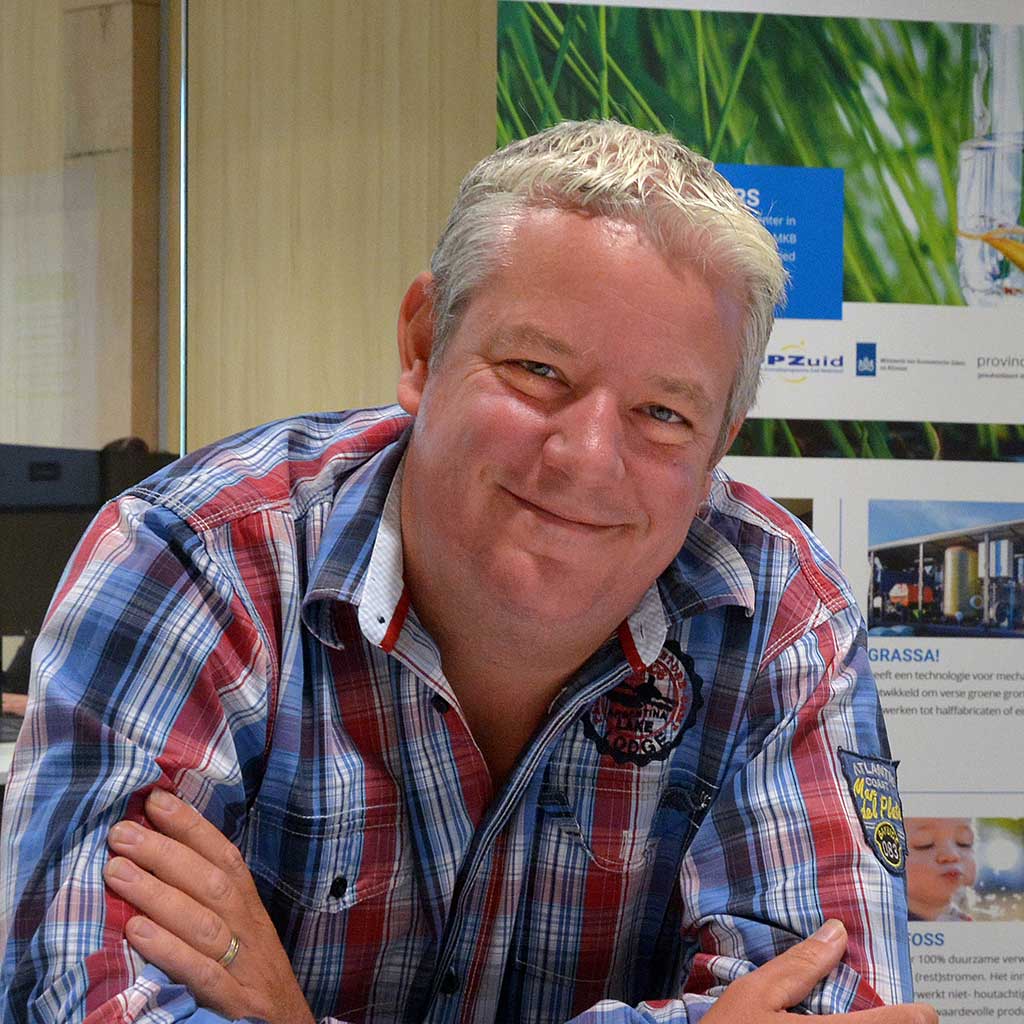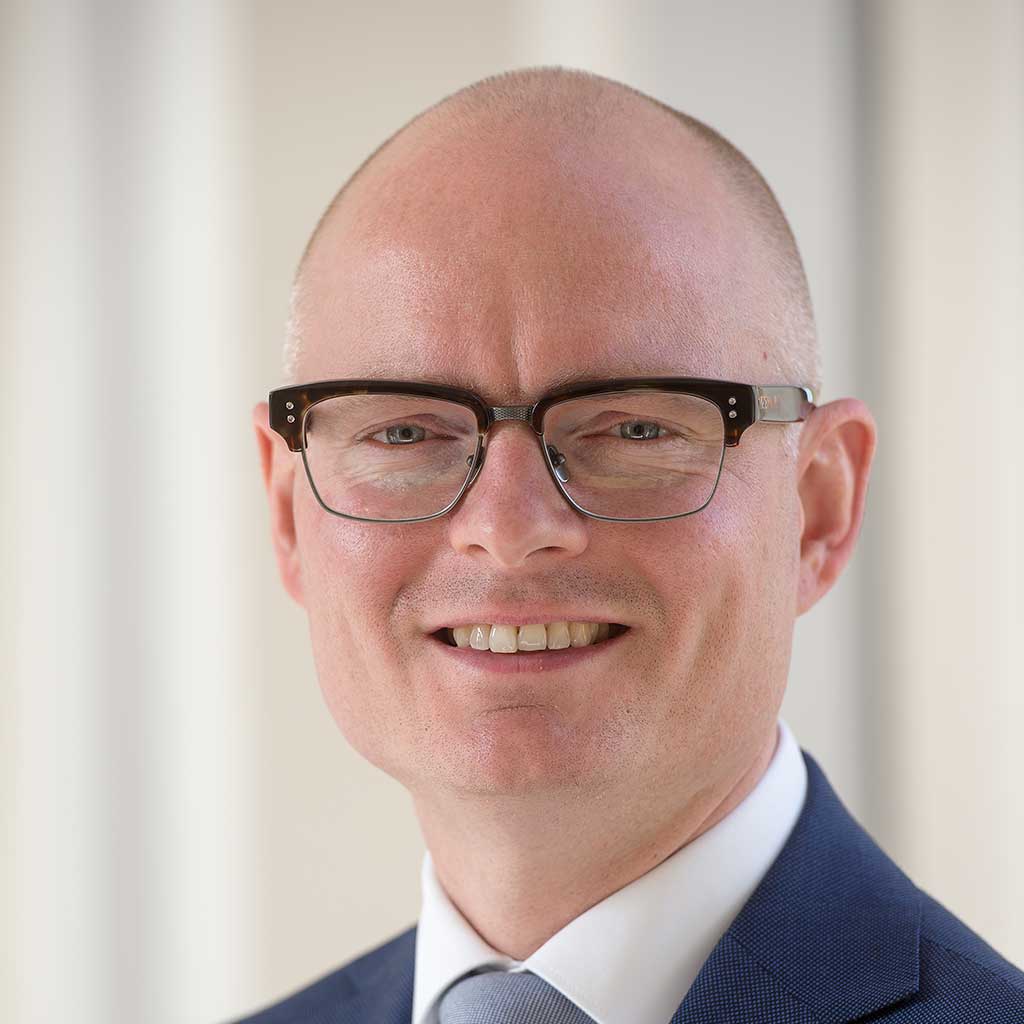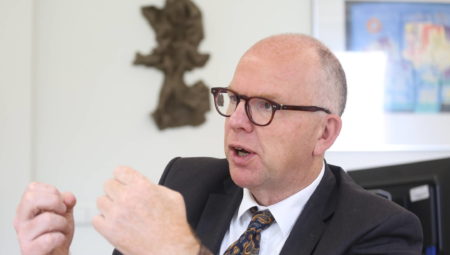The seeds for this cooperation were laid far earlier, in 2012, with the establishment of the network organisation Biobased Economy Limburg. This became the umbrella for several small, independent projects running in Limburg at the time. The master plans for a research and business campus at Chemelot and a valorisation campus in Maastricht have also grown into ‘Brightlands’ during this period, also including campuses in Venlo and Heerlen. Plans were made to set up a knowledge axis at about the same time: an initiative where knowledge institutes for higher education, together with the Province, invested in research and education aimed at strengthening the regional economic structure.
Yvonne van der Meer, Associate Professor and Group Leader Sustainability of Biobased Materials at Maastricht University, witnessed this at first hand: “We were already looking at which subjects would lend themselves to making connections between the campuses at that time. I was already working with bio-based materials and saw the connection: biomass comes together in Venlo, with chemistry and materials at Chemelot. We could establish the link with technical and medical applications in collaboration with the RWTH in Aachen and the Health Campus Maastricht.”
These activities supported the transformation of Limburg’s economy into a knowledge one, with knowledge creation as an important underlying pillar, where the agrofood chemical and health sectors were linked in terms of content within the overarching theme of ‘bio-based economy’. In this aspect, Source B was in fact the first truly cross-campus theme. Based on this starting point, various connections have now taken concrete shape and have been launched, contributing to a Limburg knowledge ecosystem where it’s not only the sectors which can be connected, but the value creation into products with higher added value could also be deployed in the same region.
“The bio-based eco-system is growing,” notes Joost van den Akker (Commissioner for Economy and Knowledge Infrastructure). “We are strengthening where our strengths lie, and building on Limburg’s strengths. Our four Brightlands campuses in Limburg are physical crystallisation points to this end. SMEs are becoming increasingly involved. In the game of global societal challenges and strengthening economic opportunities, the regional government plays an important role by connecting stakeholders and supporting crucial developments. After all, innovation takes place not just in the sectors, but also at the intersection of the sectors.”
Connecting role
Source B’s partners took part in the creation of a range of initiatives to strengthen the structure, such as Chemelot InSciTe, the Bio Treat Center, AMIBM and the Feed Design Lab: institutes that have given concrete shape to the cross-campuses connection. The rapid growth of the Brightlands Campus Greenport Venlo is also partly due to the role of Source B. “Source B was in fact the cradle of the campus development that we have deployed today,” says Saskia Goetgeluk, Director of Brightlands Campus Greenport Venlo. “It has provided an impulse for shaping the bio-transition, and the bio-circular economy is one of the three main themes on this campus.”
The many cross-border projects, co-financed by European and regional funds, are also tangible successes. They have a direct and demonstrable positive impact in the EU region, such as attracting external funding and increasing high-quality employment. Many new spin-offs have emerged from major companies. Many new patents have been applied for in recent years, and thanks to the campuses, businesses in the region have gained access to state-of-the-art research infrastructures and equipment. All this has made Limburg an attractive location region, for both companies and new training courses.
But Source B’s work is not ‘finished’ as a result. The consortium envisages many future tasks ahead of it. These include identifying new opportunities and developments requiring a cross-sectoral approach, maintaining existing networks, and representing the visibility and interests of Limburg, both nationally and within the Euroregion.
Integral sustainability
The bio-based economy is now entering a new phase within the transition to a circular economy. Where there were often enthusiastic experiments in the early years, there is now an ever-increasing urgency to actually start making integral sustainability a reality. So: from niche to mainstream. Bio-based will not disappear with the rise of Circular. In fact, the use of bio-based raw materials fits perfectly within the circular economy.
Eric Appelman, CTO of the Brightlands Chemelot Campus, has clear views on this: “I’m convinced that bio-based plays a central role in the energy transition and circularity, in response to the climate challenges. But it’s not going to solve everything. We’re not heading for a future where our cars run on 100% bio-based fuel; there’s simply not enough biomass for that. What is possible however, is that aircraft engines will run partly on bio-kerosene. This is where bio-based provides the greatest added value: you need the high energy density of biomass, and you are unable to capture or recycle the emitted greenhouse gases. For plastics, recycling is the first-indicated route to sustainability, because you avoid accumulation in the living environment. That never works 100% completely, and then you have to supplement the loss from the cycle with a product based on biomass. So I envisage a great future for bio-based chemistry and materials, as part of a set of measures, alongside recycling and the generation of renewable energy.”
Appelman calls this the three cornerstone technologies. “They need each other. You need a lot of renewable energy to make products, recycling ensures that the losses in the cycle are kept to a minimum, and bio-based has to supplement those losses. This is a fantastic challenge for chemical technologists. It also shows how relevant the research is on bio-based, and thus also Source B.”
Major opportunities
The bio-based economy offers major opportunities by combining material efficiency with climate targets. And that’s exactly what Source B and the Brightlands campuses are working on; they assist companies with the changes needed to start using new raw materials. Because these are often more far-reaching than just simple process innovations. Using an alternative raw material for a product requires changes in the supply chain, in logistics and in processing, and can also entail major consequences for the use of consumables and energy.
Patrick Lemmens, Programme Manager of the Bio Treat Center: “Six or seven years ago, the large chemical industry concentrated in South Limburg, and the agro one, concentrated in North and Central Limburg, were two separate worlds. Source B has led these two worlds to come to the table and recognise each other’s importance.”
Role of farmers
Commissioner Hubert Mackus: “Limburg has been linked to agriculture and horticulture for centuries as a province. It is rooted in people, society and the region (also as a physical place). Limburg has strong roots not only in agriculture and horticulture, but also in manufacturing and logistics. Couple this with the initiatives to develop the knowledge economy, such as the Brightlands campuses, and a unique and highly concentrated playing field will be created where agriculture has great value not just as a primary sector, but also in the circles around it. It is particularly the primary sector which is at the basis of sustainability in general, and material efficiency in particular. A combination of trends in society means that a great deal of attention is currently being paid to new biomass sources for a wide range of applications. The possibilities for multiple use of biomass seem to be almost unlimited.”
Partly driven by the ‘circular agriculture’ vision, the primary sector can play an increasingly important role in the sourcing of raw materials. Concepts such as bio-refining appear to have a great future in this context. Bio-refining offers enormous opportunities for fully adding value to plants, not only for food and animal feed, but also for high-quality applications such as medicines, cosmetics and chemical building blocks.
New infrastructure
We also need to realise that the ‘oil economy’ which we have built over the past hundred years, cannot be transformed into a bio-economy in a single step. It goes in small steps. In the meantime, as Source B, we have succeeded in building the knowledge infrastructure required for this purpose. The challenge is to create a physical infrastructure with biomass hubs, where raw material streams from the region can be processed into semi-finished products for further processing; in fact, a kind of municipal yard 2.0. The Bio Treat Center (BTC) in Venlo is already working on this. It will enable the circular bio-economy in Limburg to be facilitated optimally, thereby strengthening the supply of raw materials to the Chemelot site.
This needs farmers, who have to get used to working in new value chains, for example with the chemical industry, as Emmo Meijer pointed out. Cooperation between organisations such as BTC and Chemelot InSciTe plays an important role in this. Patrick Lemmens: “For example, we have established a very concrete connection between the challenge for the company Hofmans BV to achieve potential upgrading of champost – a residual product from mushroom cultivation – and the chemical start-up Vertoro, which has developed technology to make oil from lignin (which in turn can be released from champost). This connection would never have been established by the companies themselves; but precisely because we pivot from Source B, in this case BTC and Chemelot InSciTe, we were able to bring together completely different parties, so that they now constitute a unique project in a new value chain.
Innovative start-ups are vitally important in this transition. They are facilitated from the very beginning to the commercialisation of their technology, because they can be the knowledge engine of the large, traditional industry. And perhaps they themselves will become the industrial giants of the future.
The large industrial companies must also dare to stick their necks out in the upcoming investment rounds, by investing heavily in green (bio-based) technology. They need to sense the urgency: the realisation that those who do not change have no future prospects and will be replaced in the medium term by new players who do things differently. That won’t be easy. Eric Appelman: “We have two crushing plants for oil at Chemelot. They cost a billion euros each. So you can imagine the order of magnitude of these investments.”
Source B could play a role in greening the chemical industry by devising incentive interventions. For example, it should be feasible for any company with several traditional production lines to invest in at least one sustainable variant on the basis of another raw material, but for the time being that’s just a dream. There are no concrete plans yet.
Next phase
According to Yvonne van der Meer, in the initial phase of Source B it was mainly about getting to know each other and building up networks (“You can only find starting points for cooperation if you know what’s going on at another location”), but the knowledge and innovation ecosystem in Limburg is now fully up and running: four different campuses as physical locations, including underlying innovation and pilot facilities, all working closely together. “In the years ahead we need to prove that this ecosystem actually contributes to the economy in Limburg,” says Patrick Lemmens. “We must now start reaping what we have sown. To an extent this moves Source B into a different phase: the maturing and growth of the ecosystem, the translation of innovations into actual business, into the economy, into company locations, into contributions to the Limburg economy and employment.”
This article was written in cooperation with the Province of Limburg.









 “This is starting to work,” suggests Ermo Daniëls, Deputy Director AMIBM. “We’ve only been working for a short time; our labs didn’t go into operation until the end of 2016. Nevertheless, we have already raised € 12 million in projects in recent years. Around 80% of these projects are in cooperation with the business community. But we must be careful not only to be guided by applied research. It is precisely fundamental research that can lead to innovations and inventions that ensure that we remain attractive to the business community.”
“This is starting to work,” suggests Ermo Daniëls, Deputy Director AMIBM. “We’ve only been working for a short time; our labs didn’t go into operation until the end of 2016. Nevertheless, we have already raised € 12 million in projects in recent years. Around 80% of these projects are in cooperation with the business community. But we must be careful not only to be guided by applied research. It is precisely fundamental research that can lead to innovations and inventions that ensure that we remain attractive to the business community.”
 “Since its founding in 2014 we have now facilitated 12 projects with a research turnover of some € 10 million per year,” says Emiel Staring, Director of Chemelot InSciTe. “We have brought some 30 to 40% of our projects to market, which is an unprecedentedly high success rate. This has enabled us to commit some 40 parties to the project. They are all very aware of the successes we have achieved and they’re keen for more.” Emiel Staring will discuss the unique approach of Chemelot InSciTe in more detail in another article in this special.
“Since its founding in 2014 we have now facilitated 12 projects with a research turnover of some € 10 million per year,” says Emiel Staring, Director of Chemelot InSciTe. “We have brought some 30 to 40% of our projects to market, which is an unprecedentedly high success rate. This has enabled us to commit some 40 parties to the project. They are all very aware of the successes we have achieved and they’re keen for more.” Emiel Staring will discuss the unique approach of Chemelot InSciTe in more detail in another article in this special.

 “We have been an important part of the Limburg ecosystem for bio-based chemistry and materials for years,” says Trudy van Megen, Director of Feed Design Lab. “Together with Innovation Centre Greenport Venlo, later the Bio Treat Center and Chemelot InSciTe, we have carried out various projects to map out alternative sources of protein, such as algae, insect protein and refining grass. The unique cooperation in Limburg enables all sorts of cross-references to take place between the parties; they lead to innovations that would not have been achieved in any other way.”
“We have been an important part of the Limburg ecosystem for bio-based chemistry and materials for years,” says Trudy van Megen, Director of Feed Design Lab. “Together with Innovation Centre Greenport Venlo, later the Bio Treat Center and Chemelot InSciTe, we have carried out various projects to map out alternative sources of protein, such as algae, insect protein and refining grass. The unique cooperation in Limburg enables all sorts of cross-references to take place between the parties; they lead to innovations that would not have been achieved in any other way.”



